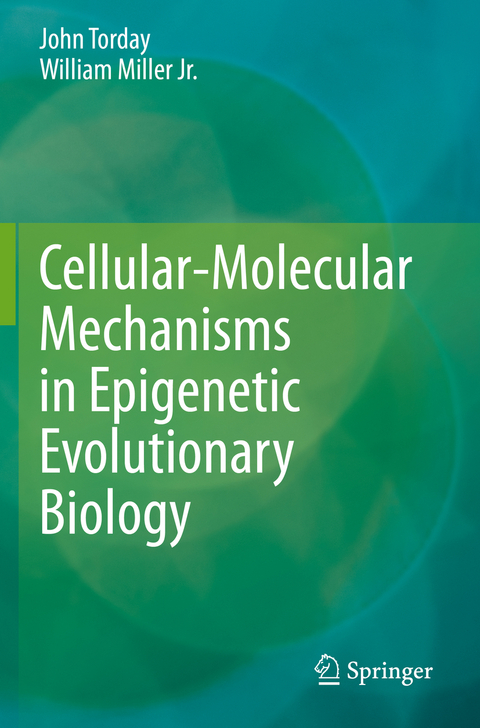
Cellular-Molecular Mechanisms in Epigenetic Evolutionary Biology
Springer International Publishing (Verlag)
978-3-030-38135-6 (ISBN)
There has been no mechanistic explanation for evolutionary change consistent with phylogeny in the 150 years since the publication of 'Origins'. As a result, progress in the field of evolutionary biology has stagnated, relying on descriptive observations and genetic associations rather testable scientific measures.
This book illuminates the need for a larger evolutionary-based platform for biology. Like physics and chemistry, biology needs a central theory in order to frame the questions that arise, the way hypotheses are tested, and how to interpret the data in the context of a continuum.The reduction of biology to its self-referential, self-organized properties provides the opportunity to recognize the continuum from the Singularity/Big Bang to Consciousness based on cell-cell communication for homeostasis.
lt;p>John S. Torday, MSc, PhD received his B.A. in Biology/English from Boston University (1968); MSc (1971) in Investigative Medicine, and PhD (1974) in Experimental Medicine from McGill University; Post-Doctoral Fellowship in Reproductive Biology, University of Wisconsin-Madison (1976). He has held Faculty positions in the Departments of Pediatrics and Physiology, Harvard Medical School (1976-91); the Departments of Pediatrics and Gynecology, University of Maryland Medical School (1991-98); the Departments of Pediatrics and Obstetrics and Gynecology, and Evolutionary Medicine, the University of California- Los Angeles (1991- present). He is a member of numerous scientific societies, and is a Fellow of the European Academy of Sciences and Arts (2018- present).
William B. Miller Jr, M.D. attended an Honors Program in Northwestern University, graduating with a B.S. in Medicine (1973) and a Doctor of Medicine (1975). He is a member of Alpha Omega Alpha, a medical honor society. Dr. Miller was on the faculty of Pennsylvania State University in the Department of Diagnostic Radiology as an Asst. Clinical Professor of Diagnostic Radiology for 10 years and was in the private practice of Diagnostic Radiology for over 30 years. It was during that period that several clinical observations spurred his interest in genetics, evolutionary biology and the microbiome, leading to the publication of The Microcosm Within, Evolution and Extinction in the Hologenome in 2013. This led to his fortuitous collaboration with Dr. Torday and a series of nearly two dozen articles on evolutionary biology and the influence of the microbiome on biological development.
Chapter 1. Introduction.- Chapter 2. Darwin, the Modern Synthesis, and a New Biology.- Chapter 3. Cognition and the living condition.- Chapter 4. What is consciousness? An Evolutionary Perspective.- Chapter 5. Networking from the Cell to Quantum Mechanics as Consciousness.- Chapter 6. The Nature of information and its communication.- Chapter 7. The information cycle and biological information management.- Chapter 8. Communication and the accumulation of genetic information.- Chapter 9. Non-genic means of information reception and exchange.- Chapter 10. The primacy of the unicellular state.- Chapter 11. Phenotype, niche construction and natural cellular engineering.- Chapter 12. Holobionts.- Chapter 13. Four Domains: Cognition-based evolution.- Chapter 14. Reconciling physics and biology.- Chapter 15. What does this mean for evolution?.- Chapter 16. Conclusion: Cellular-molecular evolution in the 21st century.
| Erscheinungsdatum | 01.03.2021 |
|---|---|
| Zusatzinfo | XV, 214 p. 10 illus., 7 illus. in color. |
| Verlagsort | Cham |
| Sprache | englisch |
| Maße | 155 x 235 mm |
| Gewicht | 361 g |
| Themenwelt | Naturwissenschaften ► Biologie |
| Schlagworte | Darwinian • Descriptive biology • epigenetics • evolutionary biology • holobiont • Physiology |
| ISBN-10 | 3-030-38135-8 / 3030381358 |
| ISBN-13 | 978-3-030-38135-6 / 9783030381356 |
| Zustand | Neuware |
| Haben Sie eine Frage zum Produkt? |
aus dem Bereich


